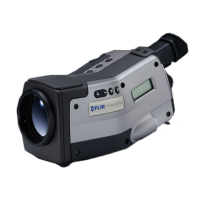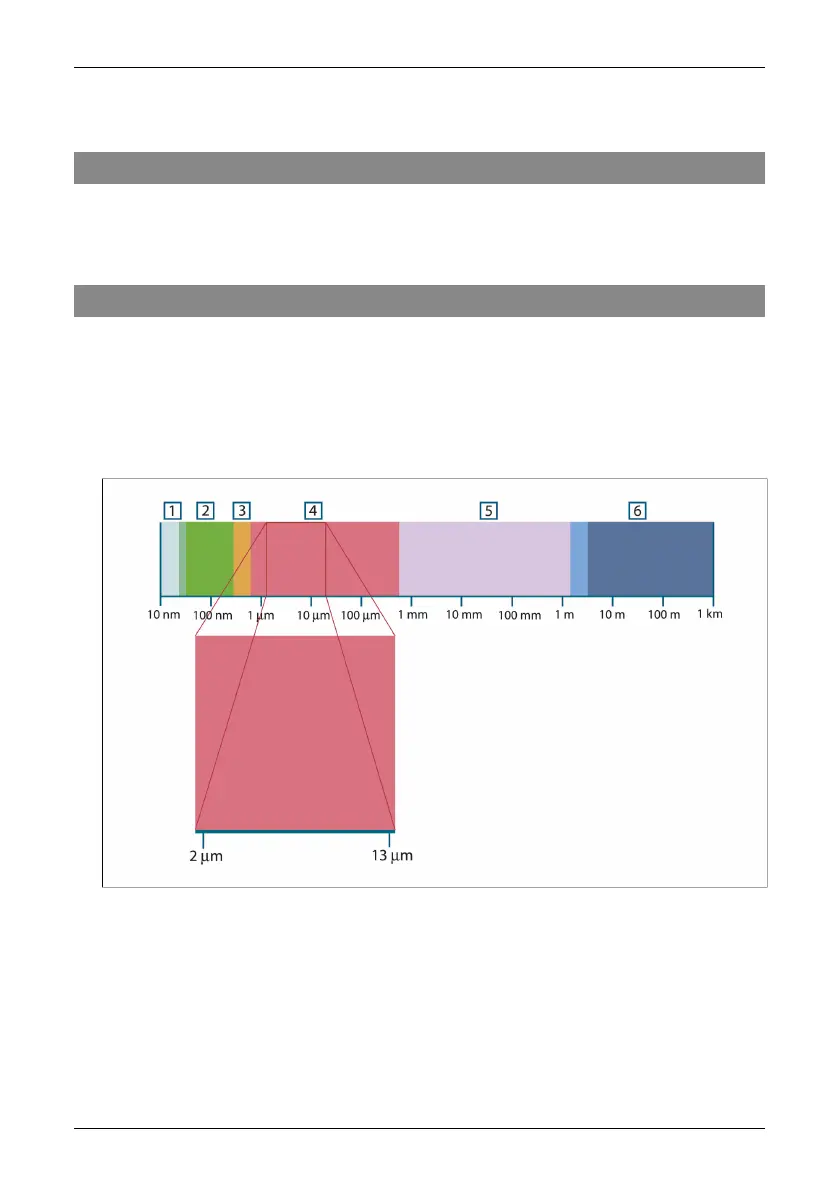18 Theory of thermography
18.1 Introduction
The subjects of infrared radiation and the related technique of thermography are
still new to many who will use a infrared camera. In this section the theory behind
thermography will be given.
18.2 The electromagnetic spectrum
The electromagnetic spectrum is divided arbitrarily into a number of wavelength
regions, called bands, distinguished by the methods used to produce and detect
the radiation. There is no fundamental difference between radiation in the different
bands of the electromagnetic spectrum. They are all governed by the same laws
and the only differences are those due to differences in wavelength.
10067803;1
Figure 18.1 The electromagnetic spectrum. 1: X-ray; 2: UV; 3: Visible; 4: IR; 5: Microwaves; 6: Ra-
diowaves.
Thermography makes use of the infrared spectral band. At the short-wavelength
end the boundary lies at the limit of visual perception, in the deep red. At the
long-wavelength end it merges with the microwave radio wavelengths, in the
millimeter range.
The infrared band is often further subdivided into four smaller bands, the
boundaries of which are also arbitrarily chosen. They include: the near infrared
Publ. No. 1 557 536 Rev. a35 – ENGLISH (EN) – January 20, 2004 87

